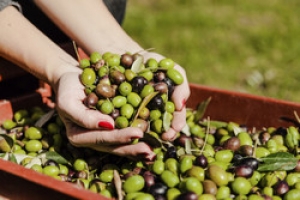EU-funded researchers are converting olive oil waste into heat and electricity to facilitate cost-effective and sustainable agricultural production.
A pilot plant capable of converting toxic olive oil waste into heat and electricity has been built at an olive farm in Andalucía. The facility, constructed through the EU-funded BIOGAS2PEM-FC project, was completed in November 2014 and promises to provide economic and environmental benefits to a predominantly agricultural and industrially underdeveloped region of Spain.
Olive oil is crucial to the region’s economy. Spain produces 50 % of the world's olive oil, with 73 % of that coming from Andalusia. In 2013 olive oil exports from Andalusia alone were worth EUR 1.5 billion. Spain also recently overtook Italy as the market leader in olive oil in the US and Japan. Meeting worldwide demand – while at the same time achieving sustainable production – is vital.
Indeed, the most important issue that the BIOGAS2PEM-FC project addressed was how to deal with the environmentally harmful and costly disposal of olive oil waste. This waste contains pesticides and toxic organic compounds; it is acidic and has a high salinity. While waste has conventionally been turned to landfill, this is not a sustainable solution in the long term.
The BIOGAS2PEM-FC project therefore sought to develop innovative technology to convert waste from the olive oil production into electricity. A three-part subsystem was developed, the primary step being an anaerobic digestion reaction to produce biogas from the waste. This process, which involves microorganisms breaking down biodegradable material in the absence of oxygen, is often used to manage waste and to produce fuels. Anaerobic digestion has become an attractive method for dealing with solid waste treatment, because the process enables excellent waste stabilisation and energy recovery without any pre-treatment of the residue.
The second step involved converting this biogas into a hydrogen-rich gas, which in the final phase could be turned into electricity through the use of fuel cells. These convert chemical energy from fuel into electricity through a chemical reaction with oxygen or another oxidizing agent.
The three stages have now been brought together to create a complete waste processing plant to generate heat and electricity that can then be used by the olive mill.
Researchers behind the project, which received EUR 1.1 million in EU funding from the FP7 programme, are confident that the innovation will have a positive impact on olive oil production. It is estimated that an average olive oil plant produces up to 30 million cubic metres of wastewater during the intense annual three to four-month production period. This is wastewater that could be used to produce biogas.
A final project meeting was held in Malaga in October 2014 to review the achievements and to visit the pilot plant itself. The end result is a modular, reliable, cost-effective and efficient combined heat & power (CHP) system suitable for distributed, on-site power generation from agricultural waste. Furthermore the technology could be applied to other forms of agricultural waste, which would open up an array of potential commercial opportunities.
For further information, please visit:
BIOGAS2PEM-FC
http://www.biogas2pemfc.eu/
Sources: http://cordis.europa.eu/


